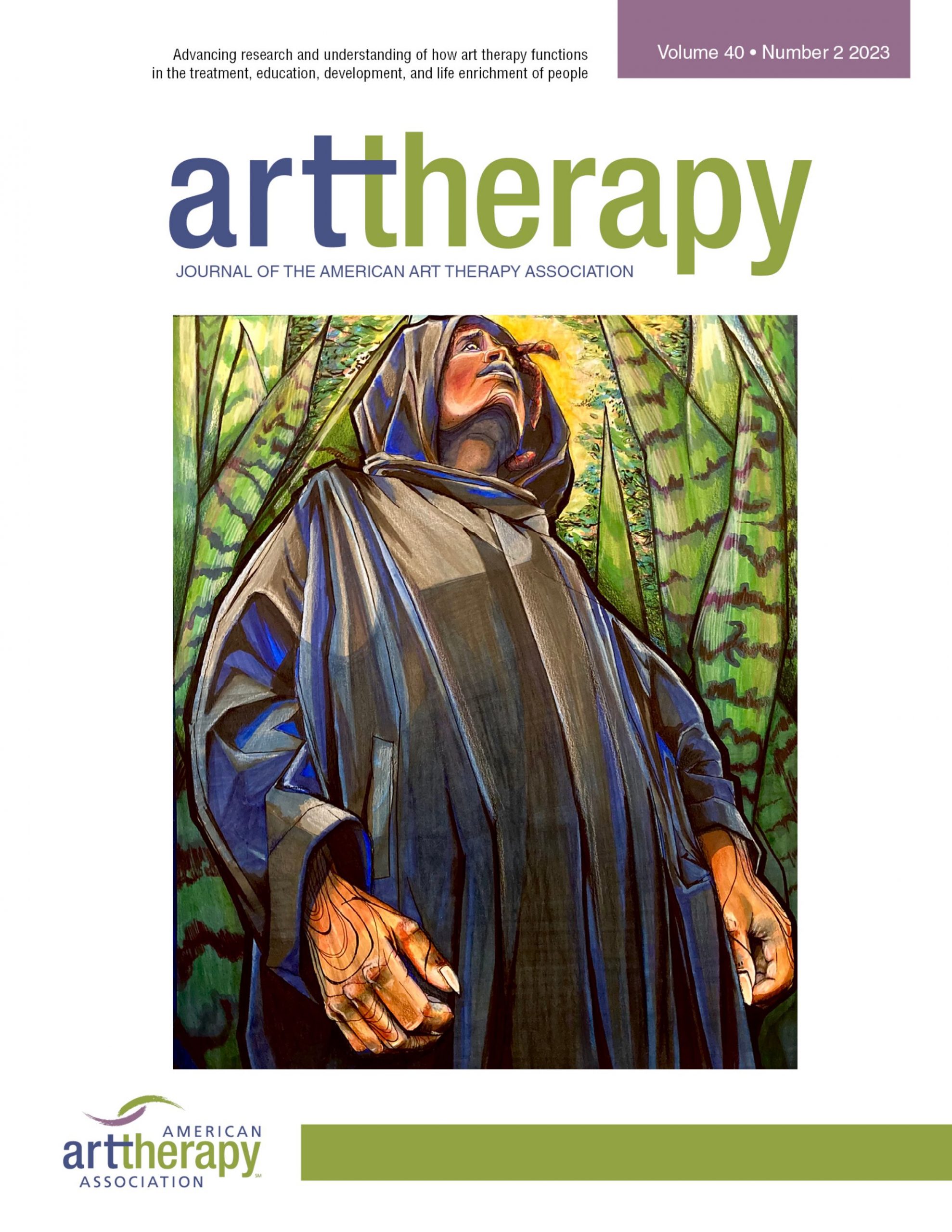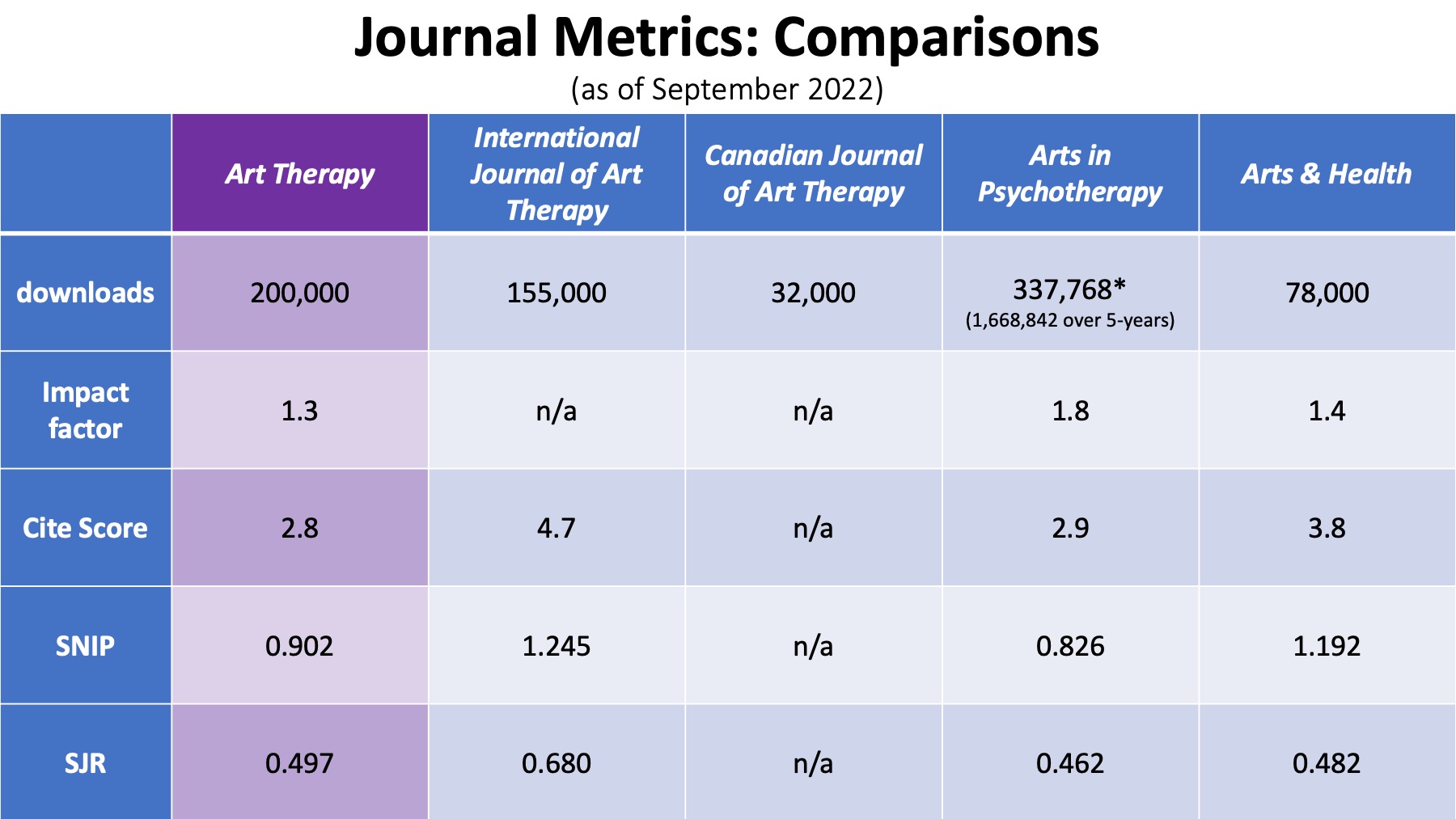Sept. 2, 2023 | By Jordan S. Potash, PhD, ATR-BC, LCPAT, Editor in Chief, Art Therapy
In a fitting tribute to Art Therapy’s fortieth volume, the journal has been recognized with an impact factor of 1.3. Clarviate bestows this metric on journals that meet certain benchmarks of scholarship by calculating how frequently items from a particular journal are cited over a two-year period. We benefited from their recent decision to extend impact factors to journals on their Emerging Sources Citation Index (ESCI) – and not just the full index. However, this debut impact factor is higher than anticipated, which puts Art Therapy on par with other social science journals that are hybrid research and practice, as well as competitive with other journals closely aligned with our profession. Such an achievement is an important milestone in the history of the journal, which along with other measures (such as views and downloads), demonstrates that Art Therapy is recognized for producing trustworthy research, practice innovations, and theoretical contributions.

Although not the only metric used to rank journals, an impact factor is one that is often considered important for determining a journal’s influence.
- For readers, metrics provide assurances of dependability in content and editorial practices. For authors, metrics might determine which journals they submit to for publishing.
- For scholars, metrics lead to inclusion in erudite databases.
- For academics, metrics may determine academic standing and promotion.
The steady increase of the journal’s ranking means that Art Therapy offers a crucial voice for promoting the value of art therapy as a significant contributor to health and mental health as well as community development.
There are many individuals – past and current – whose contributions led to this moment. Editors and Associate Editors provided critical guidance. Reviewers and ad-hoc Reviewers volunteer time to offer discerning feedback. Authors persisted through the peer review process. AATA and Taylor and Francis leaders dedicated support.
More information on Art Therapy’s metrics and how to interpret them are available here.

